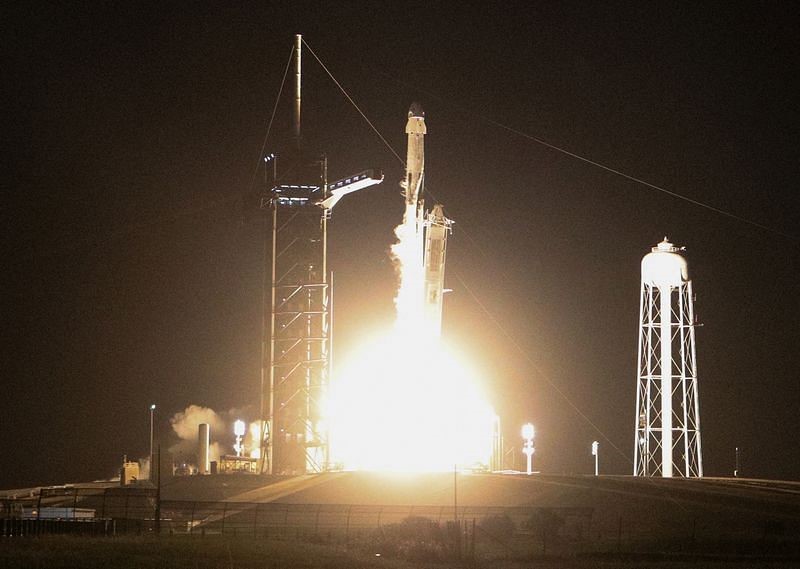Description

Disclaimer: Copyright infringement not intended.
Context
- Amazon has signed an agreement with SpaceX to launch three of Elon Musk’s Falcon 9 rockets to support deployment plans for its Project Kuiper.
Details
- Project Kuiper, also known as Kuiper Systems LLC, is Amazon's subsidiary established in 2019 with the aim of deploying a vast satellite internet constellation to offer broadband internet connectivity with low latency worldwide.
- Named after the Kuiper Belt in the outer Solar System, the project is geared towards bridging the digital divide and providing internet access to underserved populations.
Key Highlights
Satellite Constellation:
- Number of Satellites: A planned constellation of 3,236 satellites in low Earth orbit (LEO) for global coverage.
- Deployment Phases: The project intends to be deployed in five phases, with internet service expected to begin after launching the initial 578 satellites.
FCC Approval and Timeline:
- FCC Authorization: Amazon received approval from the Federal Communications Commission (FCC) for its satellite constellation deployment.
- Launch Deadlines: Amazon is mandated to launch and operate 50% of the satellites by July 30, 2026, and complete the remaining by July 30, 2029, as per FCC conditions.
Launch Contracts and Investment:
- Launch Agreements: Amazon has secured launch contracts with United Launch Alliance, ArianeGroup, and Blue Origin, totaling 92 rocket launches over the next decade, amounting to over $10 billion.
- Initial Prototypes: The prototype satellites, KuiperSat-1 and KuiperSat-2, were launched on an Atlas V rocket from Cape Canaveral Space Force Station on October 6, 2023.
Operational Plans and Antenna Technology:
- Global Connectivity: A decade-long plan to deploy all 3,236 satellites to provide broadband internet to millions lacking access.
- Antenna Technology: Amazon unveiled a cost-effective Ka-band phased-array antenna, offering high-speed data at reduced costs compared to traditional designs.
.jpg)
Development and Legal Challenges:
- Investment: Amazon has announced investments exceeding $10 billion for Project Kuiper's development.
- Legal Challenges: Lawsuits have arisen over the procurement of launch contracts, alleging favoritism towards Blue Origin and challenges with SpaceX's Falcon 9 involvement.
Future Projections:
- Expansion Plans: Contracts with multiple launch providers for satellite launches over the coming decade.
- Technological Design: Multiple terminal designs catering to different market needs, aiming for compact, high-speed connectivity at an affordable price.
Significance and Implications:
- Global Connectivity Impact: Project Kuiper could bridge the digital divide, bringing internet access to remote regions lacking traditional infrastructure.
- Economic and Social Development: Improved internet access can foster economic growth, education, healthcare, and access to information in underserved communities.
Challenges and Considerations:
- Infrastructure Deployment: Deploying and maintaining a vast satellite constellation requires significant investment and technical expertise.
- Regulatory Approval: Securing regulatory approval and spectrum allocation in various countries presents legal and logistical challenges.
- Competition: Other companies, like SpaceX's Starlink and OneWeb, are also developing satellite internet constellations, leading to competition in the market.
SpaceX: Overview and History
- Founding: SpaceX, or Space Exploration Technologies Corp., was founded in 2002 by Elon Musk with the goal of revolutionizing space technology.
- Mission: The company aims to reduce space transportation costs and enable the colonization of Mars through reusable rocket technology.
- Launch Milestones: SpaceX became the first private company to send a spacecraft to the International Space Station (ISS) in 2012.
- Reusability: Developed the first partially reusable rocket system, significantly reducing launch costs.
- Starship Development: Currently developing Starship, a fully reusable spacecraft for interplanetary travel and Mars colonization.
Falcon 9 Rocket: Overview and Design
- Configuration: Two-stage rocket with first-stage reusability.
- Height and Diameter: Approximately 70 meters (230 feet) tall and 3.7 meters (12 feet) in diameter.
- Payload Capacity: Can carry payloads to low Earth orbit, geostationary transfer orbit, and beyond.

Conclusion
Project Kuiper represents Amazon's ambitious endeavor to deploy a constellation of satellites aimed at providing global broadband internet access. Despite legal challenges and launch complexities, the project demonstrates a commitment to leveraging advanced satellite technology to bridge the digital divide and offer affordable, high-speed internet connectivity to underserved populations worldwide.
|
PRACTICE QUESTION
Q. Discuss the strategic significance of Project Kuiper initiated by Amazon in the context of global satellite internet connectivity. How does Project Kuiper differ from the Kuiper Belt in the realm of space exploration? (250 Words)
|















